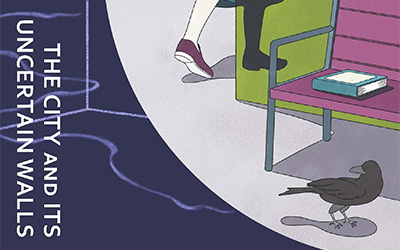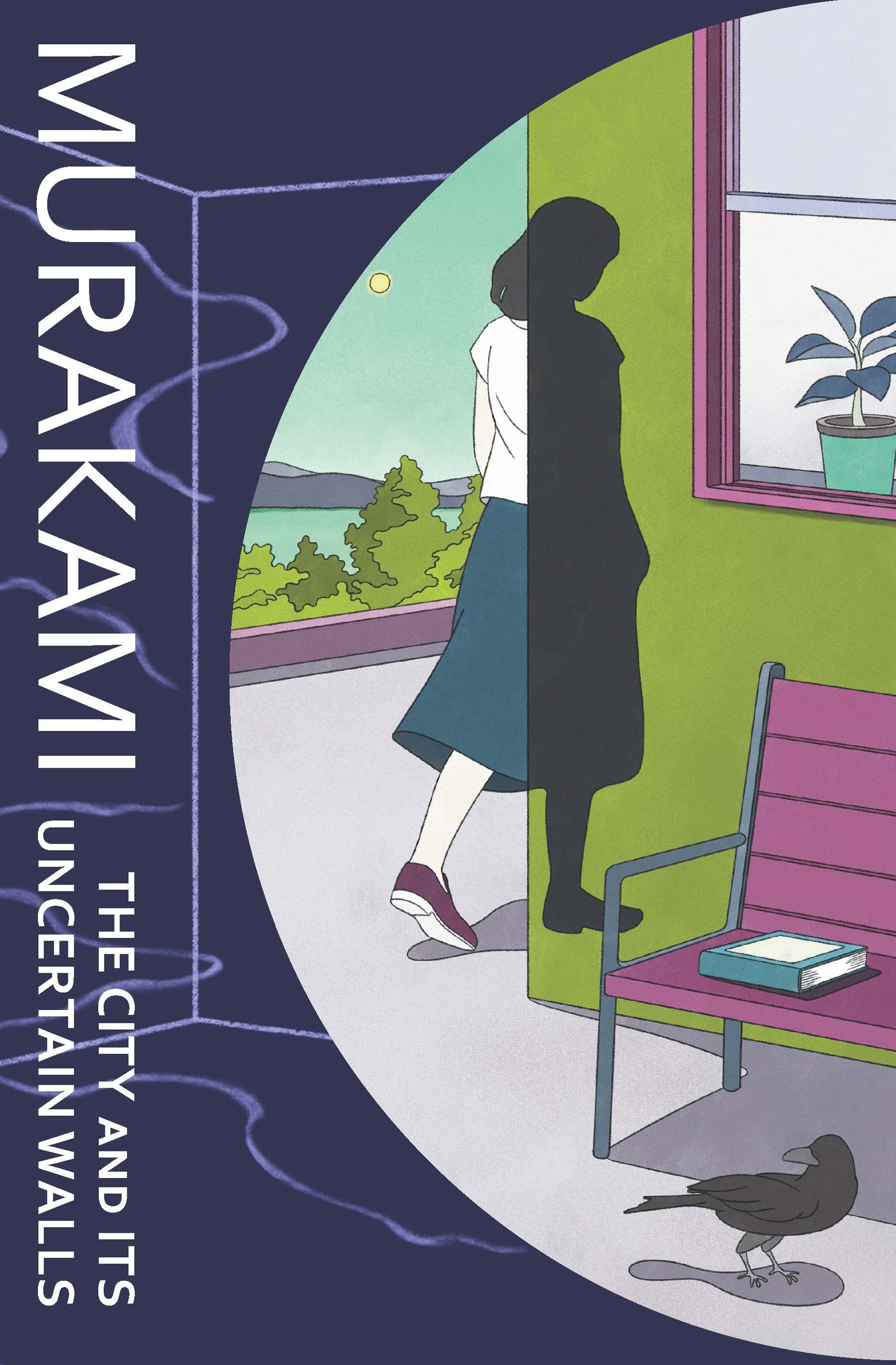
- Free Article: No
- Contents Category: Fiction
- Review Article: Yes
- Article Title: Fish bones
- Article Subtitle: A ponderous iteration of an earlier novella
- Online Only: No
- Custom Highlight Text:
Part one of Haruki Murakami’s The City and Its Uncertain Walls – a homage to magical realism and some of its greatest proponents, including Jorge Luis Borges and Gabriel García Márquez – presents an unnamed narrator searching for truth in a fantastical library behind a guarded wall. The two further parts also explore the idea of the inhabitation of libraries. Indeed, this will be familiar to Murakami’s readers, for he has written about libraries before. For instance, in his children’s novella The Strange Library (1983) a schoolboy is imprisoned in the under-ground maze of his local library and told to memorise books.
- Featured Image (400px * 250px):

- Alt Tag (Featured Image): Cassandra Atherton review ‘The City and Its Uncertain Walls’ by Haruki Murakami
- Book 1 Title: The City and Its Uncertain Walls
- Book 1 Biblio: Harvill Secker, $49.99 hb, 449 pp
- Book 1 Cover Small (400 x 600):

- Book 1 Cover (800 x 1200):

- Book 1 Readings Link: https://www.readings.com.au/product/9781787304475/the-city-and-its-uncertain-walls--haruki-murakami--2024--9781787304475#rac:jokjjzr6ly9m
While there are vivid and beguiling passages in The City and Its Uncertain Walls, the slow pace, frequent long-windedness, and mundane repetitions mean that anyone who isn’t a Murakami fan may struggle to finish its almost 500 pages. In the Afterword, Murakami reveals the history of this novel as a rewriting of a novella of the same name which he published in the literary magazine Bungakukai in 1980. In his usual self-effacing style, he states that this original text was ‘a bit raw’ because he ‘lacked the skills as a writer’, and that he ‘regretted publishing the story’.
Two years later, he attempted to rewrite and revise the novella but instead wrote a ‘double feature’ of ‘two alternating, parallel stories’ that was published as Hard-Boiled Wonderland and the End of the World (1985). Almost forty years later, Murakami justifies returning for a third time to this fantastical city behind towering walls because it is like clearing ‘a small fish bone caught in my throat, something that bothered me’. The metaphorical fish bone may have been expelled, but The City and Its Uncertain Walls is an unsatisfying attempt to complete the original work.
Divided into three sections, Part One is ostensibly a teenage love story. The narrator’s love for his girlfriend builds until she announces: ‘The me here with you now isn’t the real me. It’s only a stand-in. Like a wandering shadow … The real me lives … in that town surrounded by a wall.’ When she disappears, the narrator looks for her in the walled town where she has said she works in the library. He eventually gains entry to the town and becomes its dream reader. However, before he can do so, the Gatekeeper tells him he must be violently separated from his shadow.
Murakami’s musings on shadows and dreams chime with the novel’s preoccupation with the nature of reality:
My shadow spoke. ‘I’ve said this before, but can’t you consider that maybe here she’s only a shadow, and that the girl outside the wall is the real person? … Here’s my hypothesis: Isn’t this a land of shadows, where shadows father, huddle together in this isolated town, and live quiet lives?’
The narrator’s shadow in The City and Its Uncertain Walls may be read as a response to, and interpretation of, the famous allegory of the cave in the Republic, where Plato posits that most people’s understanding of reality is made up of shadows and that their interpretations of what they see are illusory, shifting, and problematic.
The novel’s second part jumps to the time when the narrator is middle-aged and searching for a job in the rural library that appears in his dreams, and where he then becomes chief librarian. The most engaging sections are those where, in a subterranean room, the narrator converses about consciousness with Mr Koyasu’s ghost: ‘With a small creaking sound, the reality around me was cracking ever so slightly. Assuming that this was, in fact, reality.’
Some of the repetitions in the novel are frustrating. Chapter 36 ends, ‘That’s right, I no longer live in this world. I’m as dead as a cold iron nail.’ Chapter 37 begins with the same line, followed by ‘I thought about what he’d said …’ and then the line is repeated a third time, to no obvious advantage. Sentences in bold font are jarring and read like summaries of the most important points, as if readers may not be able to fathom these for themselves.
Part Two introduces a boy in a Yellow Submarine parka who becomes the protagonist in Part Three. Probably autistic, he is identified as having ‘savant syndrome’, and Murakami’s depiction of him is, at times, careless. The boy is a voracious reader and – persisting with the emphasis on libraries – the boy is represented as having an incredible internal library of memorised books. In metaphorical terms, the boy becomes the novel’s third library. Furthermore, to complicate matters, in the third part of the work the narrator and the boy return to the walled city in a final quest to find themselves. This section, significantly shorter than the other two parts, is arguably the most entertaining. It presents amusing scenes focused on earlobes – Murakami’s earlobe fetish is well known.
There are the usual issues with Murakami’s depiction of women and his male protagonists’ attitude to sex. While he attempts to give the narrator’s girlfriend a rich inner life, she is a largely passive character who disappears when she wants to consummate her relationship with the narrator. The women who work in libraries are presented as subservient and well behaved, and the woman he dates from a cafe has vaginismus and is presented as wearing ‘a bodysuit of armor’ because it makes her feel ‘safeguarded’. It also protects the narrator from having to engage in sexual intercourse with her, despite his apparent desire.
The City and Its Uncertain Walls is Murakami’s pandemic book. He wrote it in Covid isolation, barely leaving his home. In his novel, the city’s wall is said to have been constructed ‘to prevent an epidemic from coming into the town’. This includes the metaphorical ‘epidemic of the soul’. Ultimately, the narrator asks himself, ‘Which world should I belong to? I couldn’t decide.’ In one of the best moments in the novel, Murakami engages explicitly with García Márquez’s ideas of magical realism, stating:
García Márquez, a Columbian novelist who had no need of the distinction of the living and the dead.
What is real and what is not? In this world is there really something like a wall separating reality from the unreal?
I think there might be. No, not might – there is one. But it’s an entirely uncertain wall. Depending on circumstances and the person, its texture, its shape transforms. Like some living being.
At the end of Murakami’s Afterword, and perhaps as a justification for his obsessive rewriting of one story over forty years, he paraphrases Borges: ‘there are basically a limited number of stories one writer can seriously relate in his lifetime. All we do … is take that limited pallet of motifs, change the approach and methods as we go, and re-write them in all sorts of ways.’
I would like to think this is the last version of The City and its Uncertain Walls from Murakami, but I fear he may have more iterations of this story left to tell.


Comments powered by CComment